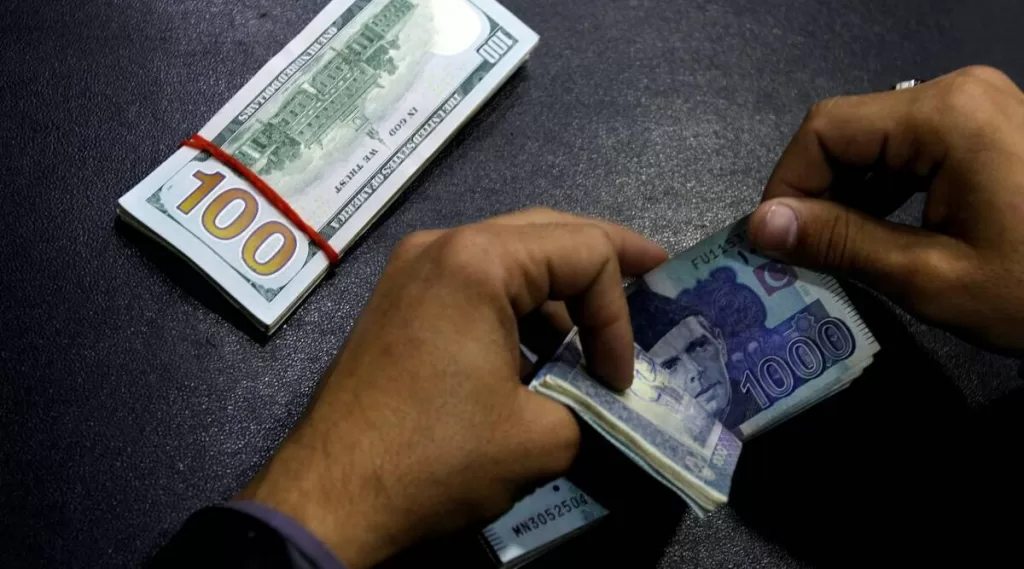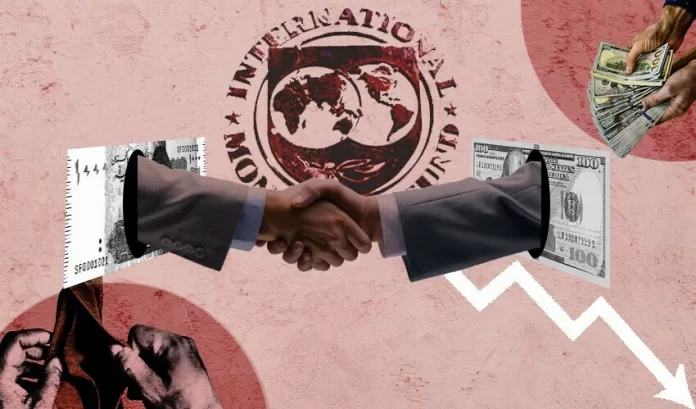Pakistan has availed International Monetary Fund (IMF) loans on 22 occasions since 1950 in its very short history as an independent nation. The first IMF Agreement came in 1958 when Pakistan was struggling with its balance of payments; its most recent was in 2019 when economic conditions had so worsened that the Imran Khan government approached the IMF for a US$1 billion loan. IMF’s approval was based on hike in energy tariffs, removal of energy subsidy, increase in taxation, privatization of public entities and fiscal policies to the budget. Pakistan’s economic crisis has worsened.
Part of the Bretton Woods Agreement, the IMF was originally created in 1945 to attempt encouraging international financial cooperation by introducing a system of convertible currencies at fixed exchange rates. The dollar was redeemable for gold at $35 per ounce at the time. The IMF also acted as a gatekeeper: countries were not eligible for membership in the International Bank for Reconstruction and Development (IBRD)—a World Bank forerunner that the Bretton Woods Agreement created in order to fund the reconstruction of Europe after World War II—unless they were members of the IMF. When the Bretton Woods system collapsed in the 1970s, the IMF has promoted the system of floating exchange rates, meaning that market forces determine the value of currencies relative to one another. This system remains in place today.
The IMF’s primary methods for achieving these goals are monitoring capacity building and lending is primarily focused on the stability of the global monetary system and monitoring the currencies of the world. On the other hand, the World Bank’s (WB) aim is to reduce poverty across the world and strengthen the low- to middle-class populations. Working to help reduce poverty, encourage trade, and promote financial stability and economic growth around the world, the IMF accomplishes this by monitoring capacity building and providing loans. Currently working on these goals with its 190 member nations, the organization the IMF still faces criticism for the possible negative impacts of its structural adjustment programs.
Descending into its worst economic nightmare, ever shrinking currency, decades-high inflation with almost nil economic growth, Pakistan has been staring at possible default as it does not have the money to service its external debts. Its only hope the IMF has withheld the bailout package over the country’s revenue shortage concerns.
Part of the 2022-2023 political unrest in the country, the current economic crisis is an ongoing one, causing severe economic challenges for months due to which food, gas and oil prices have risen. The Russian invasion of Ukraine caused fuel prices to rise worldwide. Excessive external borrowings by Pakistan over the years is now raising the spectre of default, causing the currency to fall and making imports more expensive in relative terms. By June 2022, inflation was at an all-time high, along with rising food prices. Poor governance and low productivity per capita in comparison with other low to middle-income developing countries have contributed to a balance of payment crisis, the country is now unable to earn enough foreign exchange to fund the imports that it consumes.
Poised dangerously on the ledge of an abyss could lead Pakistan to default on foreign payments. Pakistan’s current Gross Domestic Product (GDP), per capita income, GDP growth are the lowest in the neighbourhood, only war-torn Afghanistan’s economy is weaker. Likewise Pakistan’s unemployment and inflation rates are the highest in the region. The Human Development Index (HDI) which measures a country’s achievements through three basic dimensions – health, knowledge and standard of living – ranking Pakistan on the 161st position out of 185 countries in 2022. What a travesty of fact that a little known nuclear power is among the 25 countries with the lowest human development in the world.
Pakistan has not been able to impart adequate technical and vocational education that provides its immense labor force market-driven skills. A significant proportion of the formal workforce in the country is under-skilled and inadequately remunerated. The country also has a large informal sector, which is unregulated and where exploitation of workers, especially of women and children, remains rife.
When the Covid-19 pandemic hit Pakistan, it coped well enough. However, the lingering impact of the flooding this past summer is still continuing and has exerted further pressure on Pakistan’s Human Development Index (HDI) ranking for quite some time, even though the HDI for 2021-22 was released in September 2022, after the massive flooding event. Pakistan is among those who are on the front lines of global climate change and faces extreme weather conditions. Last year at least one-third of the country was submerged during apocalyptic monsoon rains that affected 23 million people and destroyed more than 2 million homes, in addition to crops and cattle, at least 1,700 people died. To make matters even worse, monsoons have just arrived in Pakistan, if last year was an indication we could be in for yet more suffering.
Pakistan has repeatedly approached the IMF for help over the last 30 years due to a combination of factors: A never-ending trade deficit, heavy borrowing to finance its spending and poor debt management. As an economy that consumes more than it produces, it relies on debt both from foreign and national sources. The vicious circle of ill-conceived resource allocation and planning has exposed the long-covered-up financial mess.

The IMF conditions have remained largely unchanged for at least the past four decades under over a dozen bailout packages. The key conditions include doing away with heavy subsidies on energy, strengthening public debt sustainability, implementing a market-based currency exchange regime, and implementing corrective policies and reforms to mobilize tax revenues. Flouting the IMF conditions has been the norm for successive governments since the 1990s. Inflation and currency exchange rates have been kept artificially low, primarily out of fears of losing popularity among voters. As matters stand today, the IMF has rejected Pakistan’s request to reduce the requirement of securing $6 billion in additional loans, leaving the government with no choice but to salvage the agreement.
With skyrocketing inflation, soaring joblessness, and worsening security, which will further dampen economic growth, the attention of our policy and decision makers is riveted by a vicious power tussle which will not abate till a new government has assumed power. This time events have taken a turn for the worse and in order for this time to be different, after covering its debt repayments and possibly engaging in debt restructuring, Pakistan will have to address the fundamental issue with its economy: low production and low exports. Even as Pakistan struggles to keep its economy afloat and with the country’s dwindling foreign exchange reserves of $4.3 billion sufficient to meet only a month’s worth of imports, IMF funding is crucial for Pakistan to avert default on its foreign loans and other payments. At this time the economy continues to remain in intensive care unit and is barely breathing thanks no doubt to the injection of funds from the IMF, World Bank and Asian Development Bank (ADB).
Hopes had been diminishing fast for the revival of the stalled IMF programme. Ironically enough, owing to the government’s inability to get the IMF programme revived, Pakistan’s ability to secure foreign loans from multilateral and bilateral creditors has shrunk considerably. As a last-ditch effort Pakistan asked the US to intervene and help out. Washington was interested in knowing Islamabad’s strategy to cope with the economic challenges in case of no funding from the Fund. This has had a salutary effect. Such a breakthrough as did happen in the nick of time was a US Eid gift to Pakistan. Earlier it has appeared to be improbable earlier, if not altogether impossible.
Successive governments over several decades are to blame for Pakistan’s economic woes. Endless political turmoil along with heavy dependence on foreign loans and aid have pushed the country into its current crisis. The Shahbaz Sharif led-government had to take some harsh measures in an effort to pull Pakistan’s economy out of its deathbed and unlock the IMF bailout package. With most analysis showing that a fresh loan by IMF will give Islamabad a lifeline it yearns for. However even with the loans approved, many continue to believe it will still not resolve Pakistan’s problems.
For whatever it is worth Senator Ishaq Dar and his team must be commended for spending sleepless days and nights to get a job that needed to be done well done!




